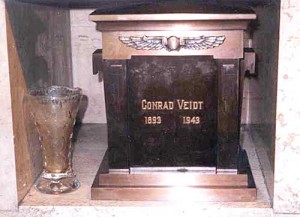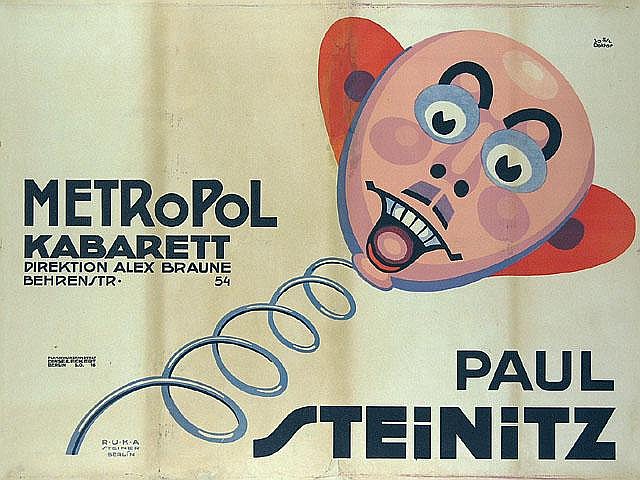

Conrad Veidt
Hans Walter Conrad Veidt was born in Berlin on January 22nd 1893.
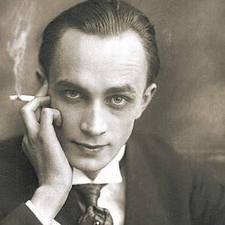
In 1914 he was drafted into the German Army and then in 1915 sent to the Eastern Front, where he contacted jaundice and pneumonia. A pre-war relationship with the actress Lucie Mannheim, encouraged him to go into the theatre and having been given a full discharge from the army in 1917, he returned to Berlin to pursue an acting career.
He appeared in over 100 films from 1919 until 1943, including two of the most well-known of the silent era: The Cabinet of Dr. Caligari (1920) and The Man Who Laughed (1928).
Stills from The Man Who Laughed are thought to be Bob Kane’s inspiration for the creation of comic book character The Joker.
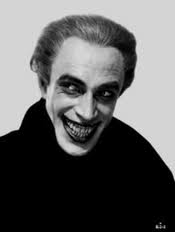
“Any Berlin lady of the night might turn out to be a man: the prettiest girl on the street was Conrad Veidt, who later became an international film star.”
Anita Loos, 1923
In 1919, he starred in the groundbreaking film Anders als die Andern (Different From The Others), alongside Anita Berber. It was written by Richard Oswald with the assistance, creatively and financially, of Dr. Magnus Hirschfeld and is noteworthy as one of the first sympathetic portrayals of homosexuals in cinema.
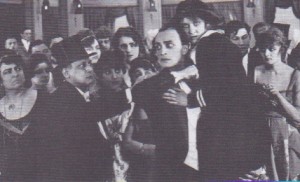
(Anders als die Andern, 1919, Anita Berber is on the far right)
Anders als die Andern was reworked into the 1961 British film, Victim, starring Dirk Bogarde.

In 1926, and by now one of the highest paid actors in Germany, he was tempted to Hollywood to work with John Barrymore on films like The Beloved Rogue (1927). But it was the advent of talking movies, and his poor English, that took him back to Germany in 1929.
Attending a men-only costume ball at Magnus Hirshfeld’s Institute for Sexual Science in 1929, Christopher Isherwood observed:
“The respectability of the ball was open to doubt, but it did have one dazzling guest: Conrad Veidt. The great film star sat apart at his own table, impeccable in evening tails. He watched the dancing benevolently through his monocle as he sipped champagne and smoked a cigarette in a long holder. He seemed a supernatural figure, the guardian god of these festivities, who was graciously manifesting himself to his devotees. A few favoured ones approached and talked to him but without presuming to sit down.”
Christopher Isherwood, Christopher and His Kind

He was married three times. Firstly to Augusta Holl, a cabaret artist known as ‘Gussy’, in 1918. This was short-lived and ended in divorce in 1922. His second wife was Felicitas Radke in 1923 with whom he had a daughter, Viola, in 1925.
He fled Germany in 1933 with his third wife, Illona Prager, and settled in England, becoming a British citizen in 1938.
He continued making films in Britain, and then in the 1940s, moved once again to Hollywood where he was cast as Major Heinrich Strasse in Casablanca in 1942.
It would seem that having fled from the Nazis, he was destined to spend his film career playing them.
He died of a heart attack in Los Angeles in 1943, aged just 50. In 1998 his ashes were interred at Golders Green Crematorium in London.
